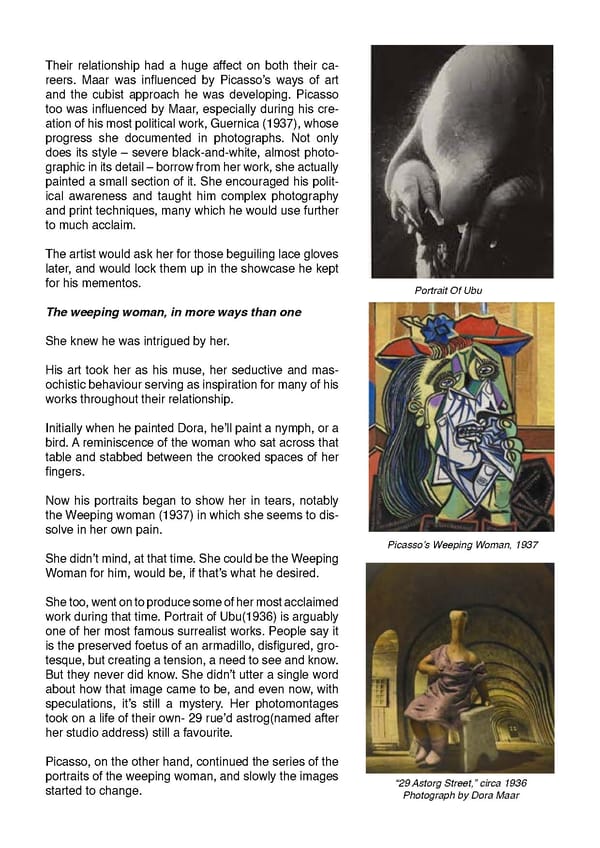Their relationship had a huge affect on both their ca- reers. Maar was influenced by Picasso’s ways of art and the cubist approach he was developing. Picasso too was influenced by Maar, especially during his cre- ation of his most political work, Guernica (1937), whose progress she documented in photographs. Not only does its style – severe black-and-white, almost photo- graphic in its detail – borrow from her work, she actually painted a small section of it. She encouraged his polit- ical awareness and taught him complex photography and print techniques, many which he would use further to much acclaim. The artist would ask her for those beguiling lace gloves later, and would lock them up in the showcase he kept for his mementos. Portrait Of Ubu The weeping woman, in more ways than one She knew he was intrigued by her. His art took her as his muse, her seductive and mas- ochistic behaviour serving as inspiration for many of his works throughout their relationship. Initially when he painted Dora, he’ll paint a nymph, or a bird. A reminiscence of the woman who sat across that table and stabbed between the crooked spaces of her fingers. Now his portraits began to show her in tears, notably the Weeping woman (1937) in which she seems to dis- solve in her own pain. Picasso’s Weeping Woman, 1937 She didn’t mind, at that time. She could be the Weeping Woman for him, would be, if that’s what he desired. She too, went on to produce some of her most acclaimed work during that time. Portrait of Ubu(1936) is arguably one of her most famous surrealist works. People say it is the preserved foetus of an armadillo, disfigured, gro- tesque, but creating a tension, a need to see and know. But they never did know. She didn’t utter a single word about how that image came to be, and even now, with speculations, it’s still a mystery. Her photomontages took on a life of their own- 29 rue’d astrog(named after her studio address) still a favourite. Picasso, on the other hand, continued the series of the portraits of the weeping woman, and slowly the images “29 Astorg Street,” circa 1936 started to change. Photograph by Dora Maar
 BROWN BOX MAGAZINE Page 14 Page 16
BROWN BOX MAGAZINE Page 14 Page 16